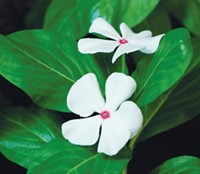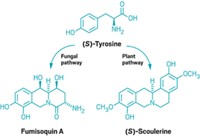Advertisement
Grab your lab coat. Let's get started
Welcome!
Welcome!
Create an account below to get 6 C&EN articles per month, receive newsletters and more - all free.
It seems this is your first time logging in online. Please enter the following information to continue.
As an ACS member you automatically get access to this site. All we need is few more details to create your reading experience.
Not you? Sign in with a different account.
Not you? Sign in with a different account.
ERROR 1
ERROR 1
ERROR 2
ERROR 2
ERROR 2
ERROR 2
ERROR 2
Password and Confirm password must match.
If you have an ACS member number, please enter it here so we can link this account to your membership. (optional)
ERROR 2
ACS values your privacy. By submitting your information, you are gaining access to C&EN and subscribing to our weekly newsletter. We use the information you provide to make your reading experience better, and we will never sell your data to third party members.
Environment
Meeting Briefs
September 4, 2006
| A version of this story appeared in
Volume 84, Issue 36
The American Society of Plant Biologists and the Canadian Society of Plant Physiologists held a joint annual conference on Aug. 5-9 in Boston. Here is a sampling of presentations made at that meeting.
Peering into arsenic-resisting plants
The ladder fern Pteris vittata has a remarkable tolerance for the otherwise toxic metalloid arsenic, and plant biologists at Purdue University and the University of Saskatchewan are beginning to figure out why. With arsenic-contaminated water and soils threatening human health around the world, scientists are keen to understand how this fern manages to take up and store this potentially toxic trace element. David E. Salt of Purdue described the team's efforts to use X-ray absorption spectroscopy to probe arsenic species in developing P. vittata ferns (optical micrograph shown, left) (Environ. Sci. Technol. 2006, 40, 5010). XAS shows that the ferns take up arsenic in the form of arsenate or As(IV) (middle). The arsenate is then reduced and stored as As(III) (right). Salt's team has pinpointed an arsenate reductase capable of catalyzing this step (Plant Physiol. 2006, 141, 1544). The enzyme, PvACR2, lacks the phosphatase activity of arsenate reductases found in plants that don't accumulate arsenic, he reported. The enzyme's unusual properties and active site could be the key to this fern's supertolerance of arsenic.
Paclitaxels via transplantation
For Kevin D. Walker, "transplant medicine" reads more like an imperative than a physician's specialty. The Michigan State University biochemist is busy transplanting portions of the anticancer drug paclitaxel's biosynthetic pathway into a bacterial host for large-scale production of second-generation analogs. Marketed by Bristol-Myers Squibb as Taxol, this structurally complex natural product now is made semisynthetically from a precursor (baccatin III) isolated from yew needles. "Demand for paclitaxel is high and increasing," Walker said, noting that the highly successful anticancer drug has also shown promise for treating heart disease and Alzheimer's. Hoping to develop an efficient semibiosynthetic route to novel paclitaxel analogs, his team has created Escherichia coli strains that express acyltransferase enzymes from the Pacific yew (Chem. Biol. 2006, 13, 309). These acyltransferases install the acyl groups that are key to paclitaxel's activity. When fed 10-deacetylbaccatin III and nonnatural acyl-coenzyme A analogs, these strains give unusually acylated baccatin III compounds "that open the door to novel acylated paclitaxels," Walker noted.
Keeping dry protects moss from radiation
Ah, springtime in the Antarctic: Mosses, fresh from winter dormancy, push their leaves out of the melting snow to catch a bit of sun ... only to be met with dangerous levels of DNA-damaging UV-B radiation. That's because these days, springtime in the Antarctic also brings with it the opening of the ozone hole. To cope, these mosses turn to desiccation, explained Sharon A. Robinson of the Institute for Conservation Biology & Law at Australia's University of Wollongong. Robinson suspected that by keeping dry, Antarctic mosses might effectively concentrate the photoprotective pigments they produce to protect themselves against UV-B radiation. To test her hunch, her team irradiated fully hydrated and desiccated mosses with artificial UV-B radiation. In all three species tested, the DNA of the desiccated moss suffered less damage than did the hydrated moss. The endemic moss Grimmia antarctici was the most susceptible of those tested, she reported. "Continuing ozone depletion events may thus have consequences for the endemic moss's future competitiveness."
Chemicals shed light on vacuolar trafficking
A plant cell's jack-of-all trades, the vacuole, performs a range of crucial functions, including controlling the plant cell's internal hydrostatic pressure and storing toxic molecules, pigments, and flavor compounds. Classic genetics tools have proven inadequate to probe some of the mysteries of this critical organelle, according to plant biologist Natasha V. Raikhel of the University of California, Riverside. Her lab is using the tools of chemical genomics to tackle two such mysteries: namely, how plant cells deliver the correct proteins to the vacuole and how the vacuole is assembled. Her team members previously identified two inhibitors (one shown) that disrupt the normal delivery of proteins to vacuoles in Arabidopsis thaliana. Now they have used the inhibitors to comb chemical databases for compounds with similar features. They then isolated mutant plants that are hypersensitive or resistant to these compounds. These mutants have proven useful to define two previously unknown, distinct pathways by which proteins are trafficked to the vacuole, she reported.
Plant glycans are 'humanized'
Good news from the "pharm": Plants that can install "humanized" sugar chains on their proteins may be on the horizon. Crop plants have been touted as cheap and efficient factories for manufacturing protein pharmaceuticals, noted Lo??c Faye of the French National Research Center (CNRS) in Mont Saint Aignan. But plants' glycosylation preferences have been seen as a major roadblock. The sugar chains that plants install on their proteins are markedly different from those that humans use, making plant-produced therapeutic proteins potentially immunogenic (see page 13). Plant and mammalian glycans mature from a common high-mannose precursor. So Faye's team knocked out the plant enzymes that convert this precursor to mature plant N-glycans in Arabidopsis thaliana and alfalfa. Their efforts have led to the plant-based production of several human proteins bearing the nonimmunogenic N-glycan precursor, he reported. Next on his list is creating plants that have the human enzymes necessary to turn this precursor into human glycans, including those that install sialic acid, a sugar that plants lack.







Join the conversation
Contact the reporter
Submit a Letter to the Editor for publication
Engage with us on Twitter